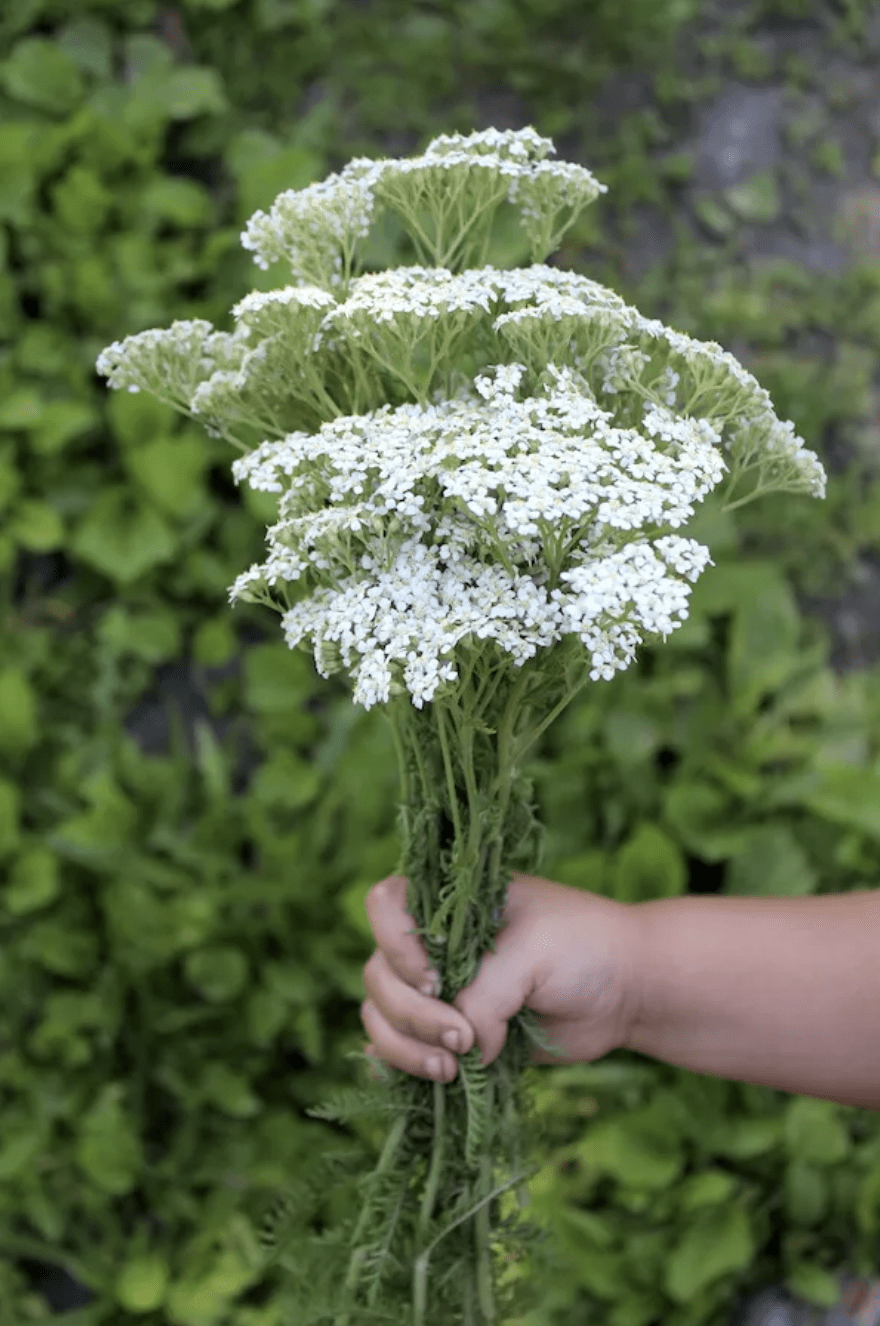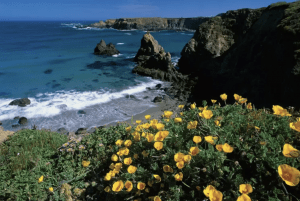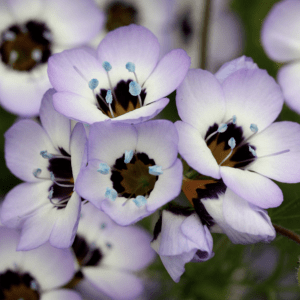Can You Find These Native San Francisco Plants? A Guide to SF Wildflowers
Native plants are an integral part of any ecosystem, and here in San Francisco we have some of the most beautiful! Here at USF, we were able to hear a talk from the grassroots organizers at SFinBloom, who showed us the benefits and beauty of cultivating native wildflowers. As you explore the city over summer, see if you can spot these plants (many planted by SFinBloom themselves) and the animals that depend on them!
Plant #1: Yarrow (Achillea millefolium)

Photo credit: Ashley Adamant
Yarrow can come in many different stunning colors like red, yellow, or shades of pink. The wild variety is usually white or light yellow. It’s common in the Bay Area, and you can definitely spot it in the Presidio and on campus here at USF.
These plants aren’t just great for pollinators – for thousands of years humans have benefitted from them as well! Yarrow can be used for a wide variety of medicinal purposes, and many tribes from the Bay used yarrow for this reason. According to the National Park Service, mashed leaves were regularly used by the Miwok for pain, and by the Pomo and Kashaya as a salve for sores. The Ohlone created tea from yarrow for stomach aches.
Yarrow blooms from March to November and benefits many species of butterflies and bees. Yarrow is known to be easy to grow as well and is a great option for making your backyard beautiful and pollinator friendly – plus you can have your own stock of pain reliever!
Plant #2: Coastal California Poppy (Eschscholzia californica)

Photo credit: Tim Fitzharris
Believe it or not, the solid orange California poppy isn’t native to San Francisco. Instead, we have Coastal California poppies, a brighter and more shrub like variety of the iconic orange flower. Coastal poppies are pollinator generalists, serving a wide array of species, and have developed a pretty cool trick to increase pollination. The flowers are dark orange in the center and bright yellow on the edges, so the center absorbs UV light while the outer edges repel it. Since insects can see UV light, this pattern attracts pollinators.

Photo credit: Toni Corelli
Plant #3: Bird’s Eyes (Gilia tricolor)

Photo credit: Annie’s Annuals
Bird’s Eyes are small but beautiful flowering plants native to California. They’re plentiful in the Bay Area, and you can even find them growing in the cracks of sidewalks! These are annual flowers that are very easy to grow in a garden and benefit butterflies and moths. While each flower is very tiny, the plants usually grow in clumps and form masses of flowers that can be seen from a distance.
Plant #4: Lupine (Lupinus genus)

Photo credit: American Meadows, Project Purity Seeds, Eden Brothers
The lupinus genus is easy to spot due to the long stalks of flowers that can be found in a variety of patterns and colors. Three species local to the Bay Area and pictured above are Golden Lupine, Sky Lupine, and Arroyo Lupine. There are a total of 138 species of lupine native to California, all with their own distinct arrangement of flowers. These plants benefit most pollinators and provide food for hummingbirds as well!
Plant #5: Purple Chinese Houses (Collinsia heterophylla)

Photo credit: Annie’s Annuals
“Purple Chinese Houses” are a wildflower species native to the entirety of California. The tower of flowers that tapers in diameter as it rises upwards resembles a pagoda, giving these flowers their name. 28 plants in its genus, collinsia, call the state of California home. Along with being eye candy they provide food for caterpillars, bees, butterflies, and moths. The tower of flowers creates a unique pattern, and these plants are fairly easy to identify during their flowering season of mid spring to early summer. However, their flowering season ends soon, so it’s a good time of year to catch the last of these remarkable flowering displays!
Sources:
“Calscape – Restore Nature One Garden at a Time.” California Native Plant Society, https://www.calscape.org/.
Coastside Land Trust. “The California Poppy.” Coastside Land Trust, Coastside Land Trust, 26 Mar. 2021, https://www.coastsidelandtrust.org/our-blog/2021/3/26/happy-spring-from-the-california-poppy.
“Yarrow.” National Parks Service, U.S. Department of the Interior, https://www.nps.gov/prsf/learn/nature/yarrow.htm.


